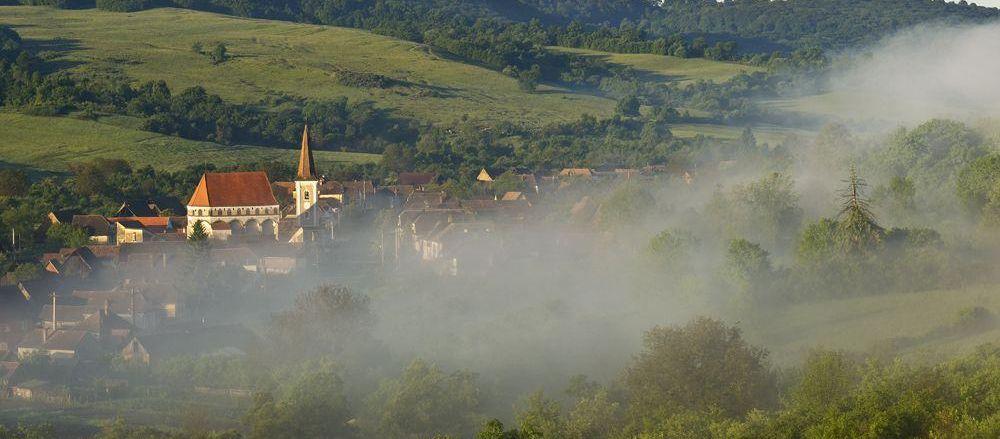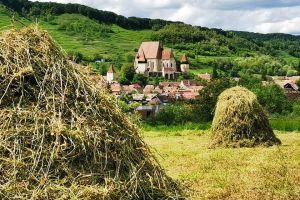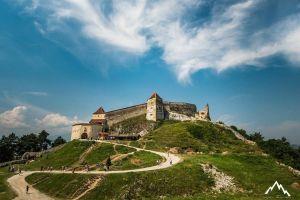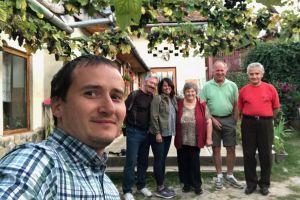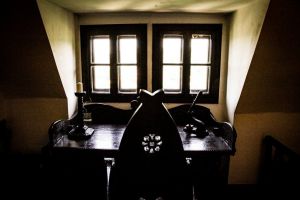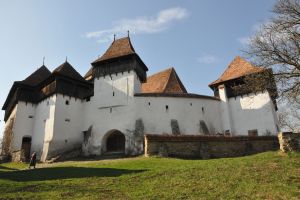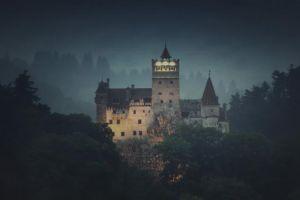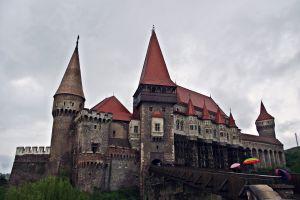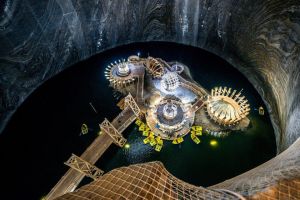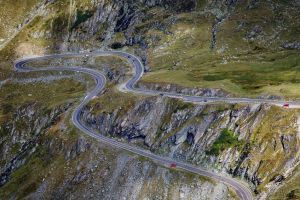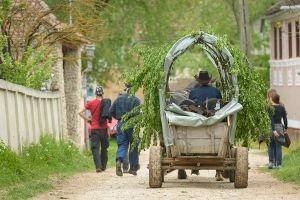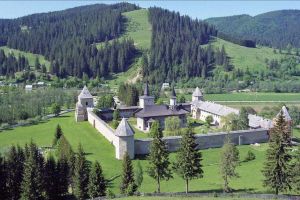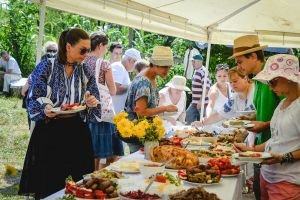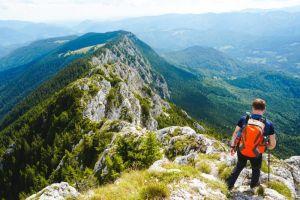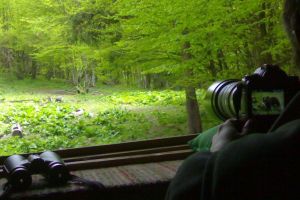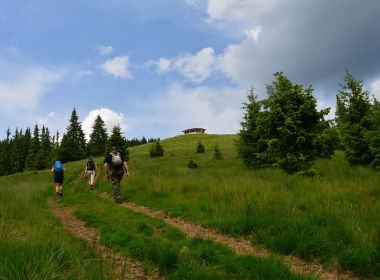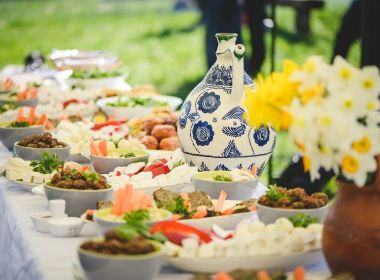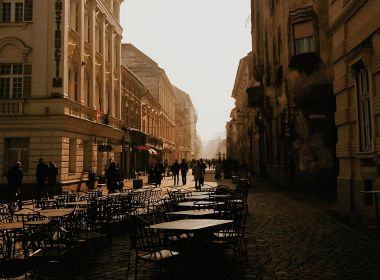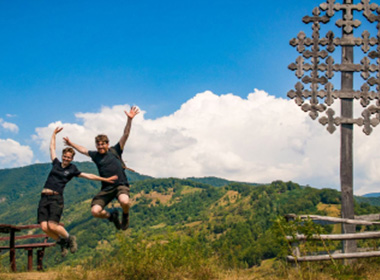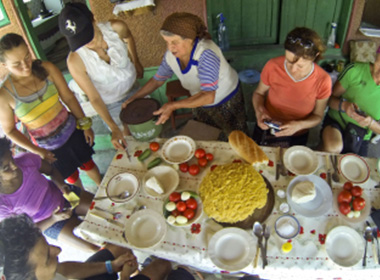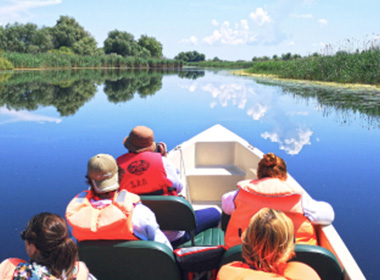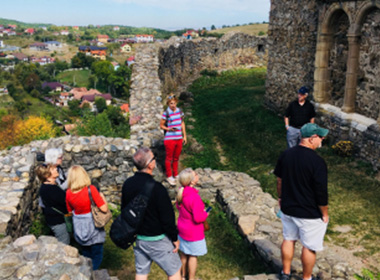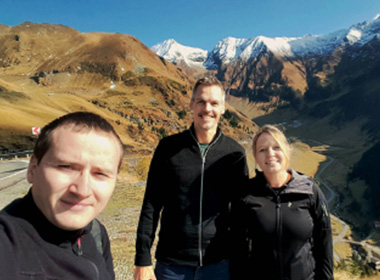Want to discover Transylvania in 2025? Great idea! In this travel guide, we'll tell you why this region is so famous, what are the best places to visit, things to do, and famous tourist attractions so you can plan an amazing holiday here!
You probably heard Transylvania is a place somewhere in Eastern Europe (actually part of Romania!) supposedly beautiful, mysterious and where (legends of) vampires come from, hidden in menacing medieval castles. In fact, the region is so shrouded in mystery and legend, that some people are not even sure if Transylvania is a real place or not.
Or perhaps you heard great things about its charming, authentic rural life from the UK's King Charles who owns 4 village houses in Transylvania?
Or maybe you've seen some beautiful pictures of famous tourist attractions, perhaps a medieval castle? While all these are true - except for the Count Dracula and vampires part - there is so MUCH more about visiting Transylvania you should know! So after reading this article, I hope you'll want to travel here and see for yourself :)
Table of contents
- Practical info to plan your trip to Transylvania
- Transylvania's regions
- The traditional way of living
- Is Transylvania worth it?
- How many days do you need in Transylvania?
- What are the best months to visit Transylvania?
- Is Transylvania cheap to visit?
- A short history of Transylvania and what you're about to see
- A cultural melting point
- 1. Bran Castle a.k.a. Dracula's Castle
- 2. Saxon Villages with Fortified Churches (UNESCO World Heritage Sites)
- 3. Wander through Sighisoara Citadel (UNESCO World Heritage Site)
- 4. See a Gothic castle full of legends: Corvin Castle
- 5. Visit the spectacular (and healthy!) Turda Salt Mine
- 6. Take a day trip to Rasnov Fortress
- 7. Visit Romania's spiritual capital: Alba Iulia Citadel
- 8. Transfagarasan Highway - a thrilling ride with awesome views!
- 9. Transylvanian culture in cities and villages
- 10. Transylvanian food and wine - a must-try!
- 11. Go hiking in Transylvania
- 12. Wildlife tracking and bear watching
- 13. Stay in family-owned boyar mansions or restored village houses
- 14. Relax in one of Transylvania's many thermal baths and spa resorts
- 15. Attend cultural events and festivals
Practical info to plan your trip to Transylvania
During my travels, lots of people told me ‘I want to visit Transylvania', but what many of them fail to realise is how big it really is. It's not easy to travel through the whole region of Transylvania and see it all - the region is 1/3 of Romania and it's larger in size than Austria! Therefore, you need to make a proper plan and match the available time you have for a holiday with your interests and your travel style.
Usually, you have to choose between crossing the main attractions of Transylvania off your list, with little time available for each one, or choosing one or two sub-regions and really diving into the history and culture of the places.
Local tip:I really recommend the second option, because slow travel is guaranteed to give you the best experience.
Either way, there's a lot to do and see in Transylvania and you still need to do a lot of research before embarking on the journey or rely on local guides to take you from one place to another - or both!
To get more basic info (tourist cities, sights, public transport) you might want to start with our travel guide on how to visit Romania for the first time.
Pro tip:Beware of some "expert travel bloggers" and foreign-made travel guides that think all of Romania's attractions are in Transylvania, for example, Peles Castle or include commercial, TripAdvisor-style attractions such as Clay Castle in their list; while these are examples of Instagrammable places in Romania, they have nothing to do with Transylvania's culture or history.
Transylvania's regions
Transylvania is a cultural melting pot because of various populations that influenced its inhabitants or came to settle here over the centuries. Nowadays, the most noteworthy ethnic minorities are Székelys (a Hungarian ethnic group) and Saxons (a German ethnic group).
Latin for land beyond the forests, Transylvania is also called Erdély in Hungarian and Siebenbürgen or Transsilvanien in German (or Siweberjen in the Transylvanian Saxon dialect). Probably based on an adaptation of the Hungarian name (the etymology is disputed), Romanians also commonly name the region Ardeal.
Long story short, the region of Transylvania is the whole area inside the arc formed by the Romanian Carpathian Mountains and is made up of many sub-regions:
- Saxon Transylvania is a triangle-shaped region in central Romania between Sibiu - Sighisoara - Brasov known for its Saxon culture and villages with fortified churches
- The region of Maramures (N-W), is the most authentic for Romanian culture and is famous for its UNESCO Wooden Churches
- Bukovina (N-E), equally Romanian, famous for its UNESCO Painted Churches
- South-West of Cluj-Napoca, Motilor Land in Apuseni Mountains and Natural Park, for rural mountain villages
- Banat - the region around the city of Timisoara
Each of these regions has its distinct cultural identity with local celebrations, cuisine, folk costumes, unique places to visit, and tourist attractions.
The traditional way of living
Even if the many castles in Transylvania and medieval cities made the region popular, locals in rural areas have preserved their traditional way of life as if in a time bubble - far from modern civilisation and mass tourism - which is the #1 reason why you should come visit!
As our historians say, the heart and spirit of Romanian culture are best experienced in the ancestral Romanian village. There, a lifestyle of hard work, self-sufficiency, community, faith, simplicity, and harmony with nature has been cherished and passed down through the generations.
In fact, experiencing this slow-paced way of life is one of the main reasons to visit Romania in the first place.
This is why King Charles fell in love with this region and owns 4 village houses where he spends his summer holidays!
Is Transylvania worth it?
The most important thing you should know is that visiting Transylvania is NOT just about seeing its top tourist attractions to snap some quick pictures, grab a tacky Dracula souvenir from gift shops, or do a day trip from Bucharest to the city of Brasov and Bran Castle, the main tourist destination in the region.
The best thing to do is to experience the magical Transylvania countryside to meet locals, see how they live, and eat a home-cooked meal with produce from their households. This is by far one of the best activities to do in Romania, and Transylvania especially.
A vacation in the region of Transylvania is also a good way to slow down and disconnect from the busy, digital, and sedentary lifestyle, and to reconnect with nature! As you'll see, there are many things to do and places to visit and this is why more tourists come here compared to the other two regions of Romania - Wallachia and Moldova.
Get inspired by our handpicked collection of day trips in Transylvania and unique experiences:
How many days do you need in Transylvania?
If you're planning to visit Transylvania you'll need min. 3-5 days to travel between different cities and tourist attractions. If you're short on time and want to get a condensed tour of the region with the best places to visit, starting from Bucharest, check out this amazing and unique itinerary we prepared for this:
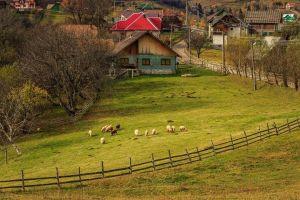
3-Day BEST of Transylvania Tour: Brasov, Sighisoara, Bran & Viscri
Start from: Bucharest
We prepared a similar one starting from the city of Cluj-Napoca, the largest city in Transylvania:
But if you want to have an authentic holiday in Transylvania, then you need min. 4-6 nights in the region. You can alternate between:
- visiting major tourist cities: Brasov, Sibiu, Cluj-Napoca, Oradea, and Timisoara (also the most beautiful cities in Romania)
- day trips from these cities to popular tourist attractions and places to visit (Bran Castle, Corvin Castle, Sighisoara Citadel, Rasnov Fortress, the Saxon villages with fortified churches, Transfagarasan Highway etc.)
- do some cool things and tourist activities popular in Transylvania: hiking in the Carpathian Mts, brown bear watching, have an agro-tourism experience, do wine tasting in the picturesque hills
- experience authentic rural life by visiting Transylvania's sub-regions, staying in family-owned guesthouses and doing the best thing you can on your vacation - relax!
And for 2025 we're planning a 8-day shared trip for a small group with fixed departure dates, that includes the best of what Romania can offer:
What are the best months to visit Transylvania?
Transylvania is a fantastic destination year-round, offering a wealth of sights, experiences, and cultural treasures. Winter brings a touch of magic with its vibrant traditions, while summer offers long, warm days perfect for outdoor adventures, though it’s also the busiest time of year.
For the best experience, consider visiting between March and October, when you can fully immerse yourself in the charm of picturesque cities, narrow streets, stunning Gothic architecture, dense forests, lush foothills, and hidden gems.
Is Transylvania cheap to visit?
Compared to other popular European regions, such as Tuscany, Transylvania stands out as an affordable destination. With a budget of approximately $50 per day, you can comfortably explore the towns and cities, immersing yourself in this fairytale land without breaking the bank.
Before we get on with the list of the best castles, places to visit, and tourist attractions in Transylvania, I want to tell you a few things about the region's history so you understand why these places are important and how to make sense of what you're about to see!
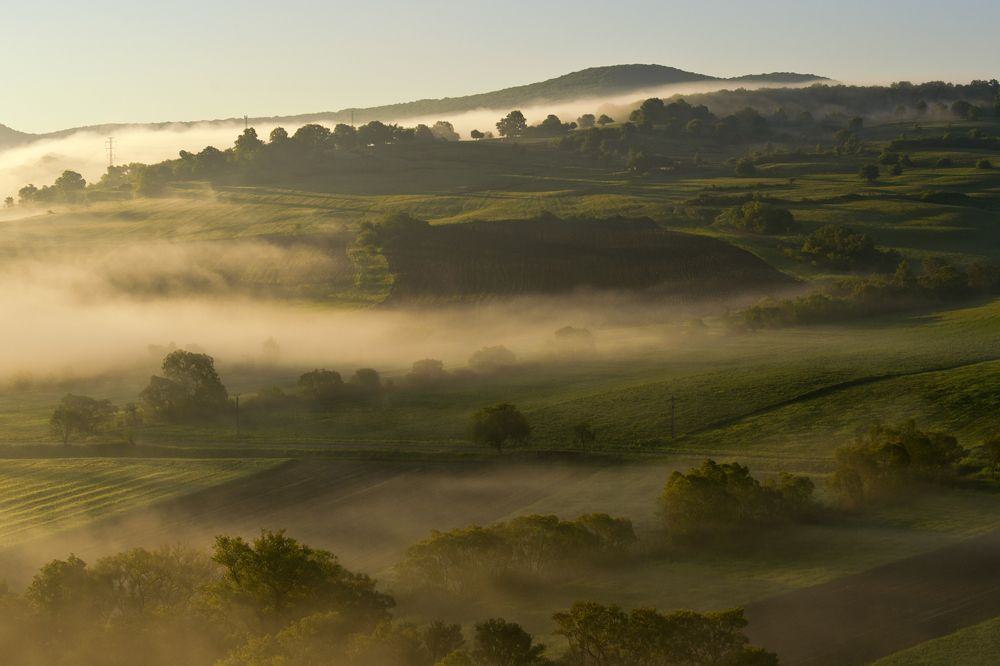
A short history of Transylvania and what you're about to see
Transylvania is arguably among the most beautiful regions for tourism in Europe, easily comparable with Tuscany or Provence. Yet, what truly sets it apart is its intricate past, reflecting a multicultural identity.
If you're a history buff, Transylvania's story unfolds like a captivating saga, intricately weaving together tales of conquest, settlement, and cultural exchange. Wikipedia has a whole page about the full history of Transylvania, but if you want a TL;DR version, here it is:
Over 2,000 years ago, our ancestors, the Dacians, settled much of the region, leaving lasting traces of their civilization at sites like Sarmizegetusa Regia (their capital), Costesti-Cetatuie, Blidaru, Luncani-Piatra Rosie, Banita, and Capalna.
The ruins of Dacian citadels are now a UNESCO World Heritage site called by "travel bloggers" the Romanian Stonehenge - what a way to disrespect two tourist attractions at the same time...
Conquered by Rome in 106 A.D., Dacia became a prosperous province known for its agriculture, wines, and gold. Remnants like the Germisara Roman Baths (Geoagiu-Băi) and Apulum ruins (Alba Iulia) reveal ancient Transylvania's opulence.
Over centuries, the fusion of locals, Roman settlers, and migrants gave rise to the Romanian people. After Rome’s fall, Transylvania passed through Austrian and Hungarian rule, marked by fortified strongholds reflecting medieval power struggles.
In the mid-12th century, German settlers, invited by King Géza II of Hungary, built fortified Saxon villages like Viscri, Biertan, and Prejmer, alongside landmarks like Bran and Corvin Castles. The iconic medieval cities of Brasov, Sibiu, and Sighisoara are must-visits, while Rasnov Fortress recalls the Teutonic Knights and Saxon heritage.
Nestled within the Carpathian arc, Transylvania’s fertile lands were shaped by centuries of conflict between the Ottoman, Habsburg, and Russian empires, with alliances, betrayals, and battles defining its history.
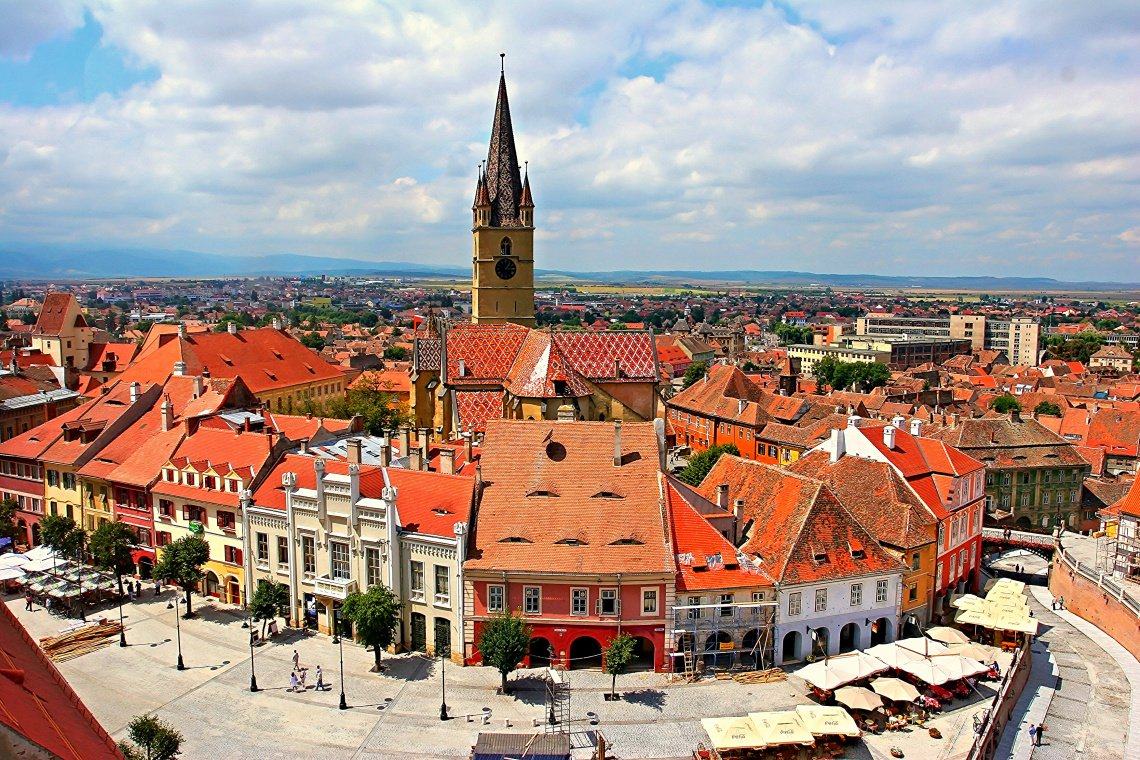
The popular tourist city of Sibiu
A cultural melting point
Despite its very complicated political history, Romanians peacefully coexisted with Transylvanian Saxons, Hungarians, Jews, Slovaks, and many other minorities. So you can imagine the melting pot of cultures, traditions, and lifestyles you will see in cities, villages, and tourist attractions in the region.
Even though Romanians were always the most numerous, we never had political autonomy and independence during the Middle Ages. Our language, culture, and religion were not recognised - and even forbidden! - which is why Romanian churches played an important role in keeping our culture alive.
There are a number of churches that were included in the UNESCO heritage sites in different areas of Transylvania - the painted churches in Bucovina, the wooden churches in Maramures, and the fortified churches in Saxon villages (southeastern part of the region).
All this lasted until the Great Union of 1918 was proclaimed in Alba Iulia when Transylvania united with the Kingdom of Romania (formed in 1859 when Wallachia and Moldova were united and later King Carol was put on the throne). This was our people's struggle and dream for at least 300 years!
So you see, there is much history behind all the castles, churches and cities you'll see. That's why authentic Romanian culture was best preserved in the rural villages where Romanians could be free and themselves, far from foreign controlling powers and wars, or city aristocracy and prohibitions.
And now, let's unfold our list of what to do in Transylvania:
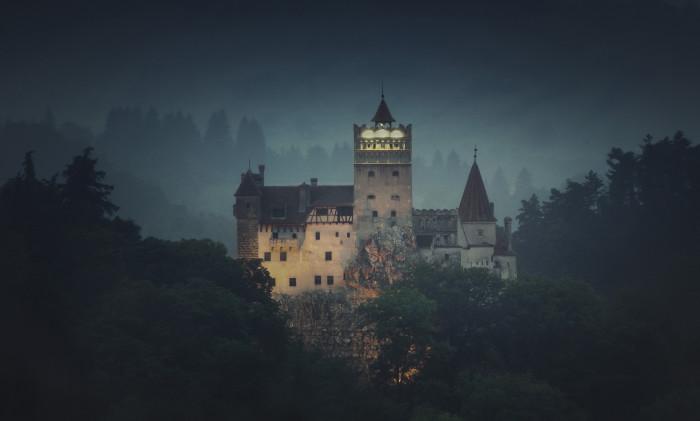
1. Bran Castle a.k.a. Dracula's Castle
Let’s start with Transylvania’s most iconic landmark, Bran Castle, famously dubbed Dracula’s Castle. While its connection to Bram Stoker’s Dracula is fictional, this medieval marvel stands proudly amid Bran’s dramatic landscapes.
The castle’s fame skyrocketed thanks to Stoker’s novel, loosely inspired by Vlad the Impaler (Vlad Dracul or Vlad Tepes), a Romanian prince known for his brutality. The 1992 Hollywood film Dracula cemented its status as Romania’s top tourist attraction.
Local tip:The 'local' vampires are called vârcolaci which are similar to werewolves, and there are lots of stories and myths in Romanian folklore about them.
If you associate Transylvania with the image of Count Dracula, the famous vampire and fictional character, it’s important to note that you won’t find any haunted castles here.
Bram Stoker never visited Transylvania or Bran Castle and it's unlikely he knew about Vlad the Impaler who died in 1476 - almost 400 years before the novel was written! Google and Wikipedia didn't exist back then :)
Local tip:The Dracula thing is a blessing and a curse for Romanian tourism - everything is Dracula-branded, from souvenirs, products (including wines and chocolate no Romanians buy!), and tours to attract naive tourists; they're all fake, cheap, and of low quality so watch out!Local tip:If you want to find the real residence of Vlad the Impaler, you need to get to Poenari Citadel, a site worth visiting for enthusiasts seeking authentic connections to the legendary figure.
Located in Bran, this is the most visited castle in Romania and is accessible on day trips from Brasov, Bucharest, and Sibiu. If you want to walk through Bran Castle narrow corridors, note that tickets cost €11 or $12.
Skip the Dracula myths and let our guides reveal the true story behind this iconic Transylvanian castle.
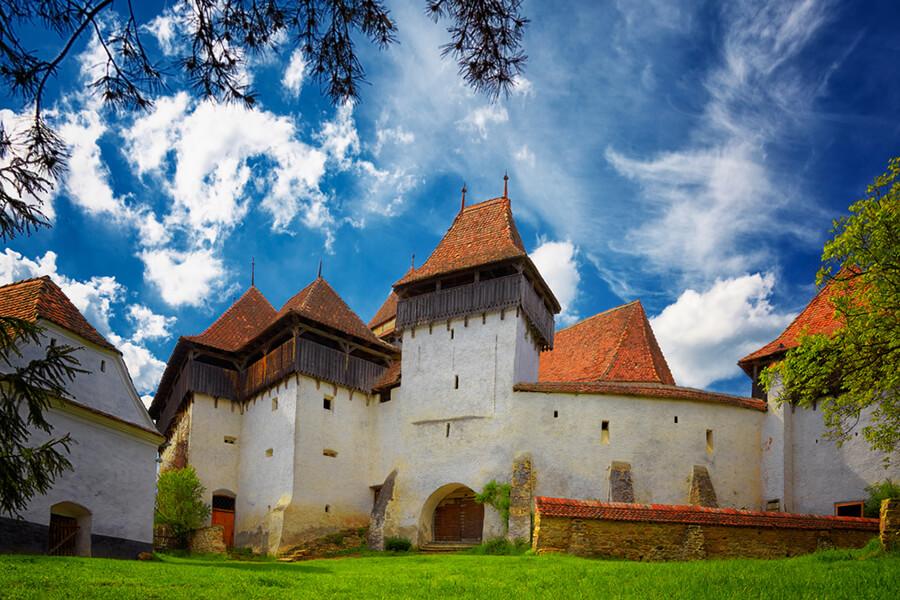
Viscri fortified church
2. Saxon Villages with Fortified Churches (UNESCO World Heritage Sites)
In the 12th century, Hungary’s king invited Saxon Germans from Western Europe to colonize the Brasov-Sibiu-Sighisoara region, offering land and benefits in return. With help from the Teutonic Knights, they built fortifications to defend the empire’s borders from pagan invaders.
This is why Transylvania is dotted with fortified villages and medieval cities surrounded by walls and castles. With over 150 well-preserved historic sites, history enthusiasts will find plenty to explore in this region’s rich and complex past.
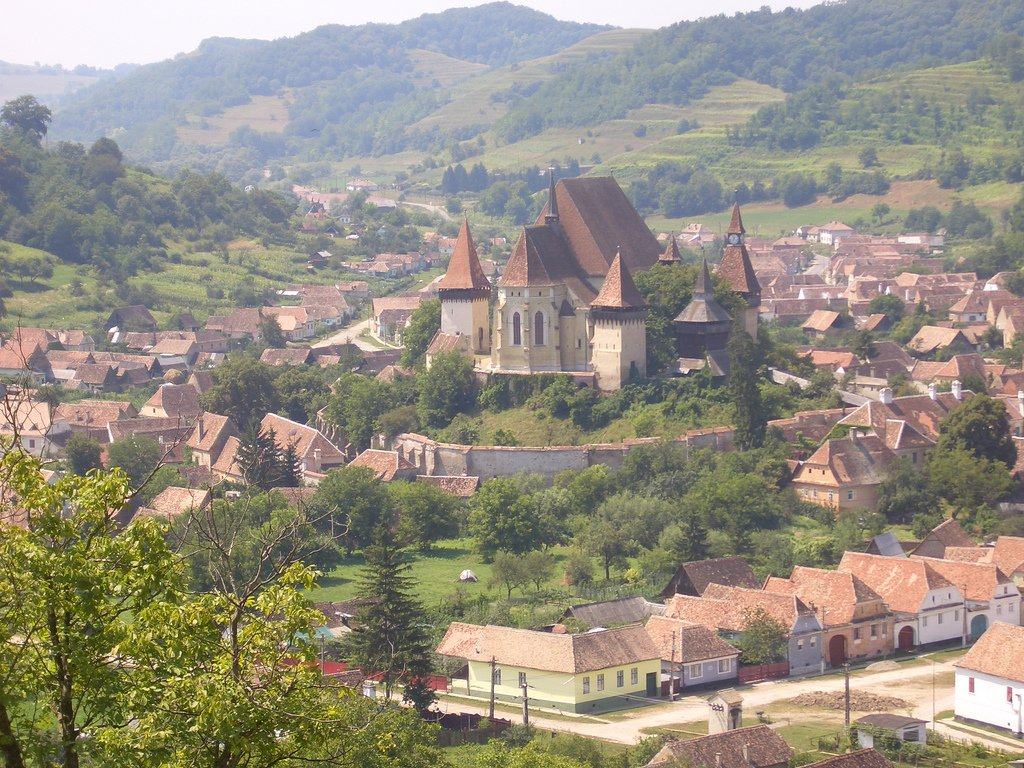
Biertan Fortified Church, another UNESCO World Heritage site
There is a group of seven villages with fortified churches out of the many Saxon villages in Transylvania - Viscri, Biertan, Prejmer, Saschiz, Darjiu, Valea Viilor, and Calnic - that are inscribed on the list of UNESCO World Heritage Sites. Among them, Viscri is the most famous, thanks to King Charles, who restored a house there as his summer retreat.
Other beautiful villages to explore include Malancrav, Copsa Mare, Crit, Alma Vii, Cincsor, Richis, and Cisnadioara. Many feature beautifully restored traditional houses transformed into boutique guesthouses, perfect for a peaceful weekend escape.
Pro tip:Fortified churches don't have typical visiting hours, and they're still in service; without a guide, or very good local info, you won't be able to get in or know what you're looking at.
Besides being incredibly old, these medieval villages preserve our rural culture and ancestors’ way of life as if in a time bubble. You will literally make a trip 100 years back in time if you go visit them on a day trip or spend a couple of nights there.
3. Wander through Sighisoara Citadel (UNESCO World Heritage Site)
Sighisoara Citadel is one of the best-preserved citadels in Europe dating back to the 13th century where people still live!
Since 1999, Sighisoara Citadel has been a UNESCO World Heritage Site. With its cobblestone streets, colorful houses, and stunning hilltop views, it’s a must-see in Transylvania. The well-preserved fortifications, including the 14th-century Clock Tower (offering panoramic views), showcase the region's rich medieval history.
Stroll through narrow streets lined with artisan shops to immerse yourself in local culture, then enjoy traditional Romanian food at one of the town’s top restaurants. Don’t miss the Covered Starway and Church Hill, home to a historic church and centuries-old cemetery.
A stunning castle in Transylvania
4. See a Gothic castle full of legends: Corvin Castle
In our opinion, Corvin Castle is the best in Transylvania, though it may not rival Bran Castle’s fame. Also known as Hunyadi Castle, this stunning gothic-Renaissance structure offers an authentic medieval atmosphere.
Built in the 15th century as a fortified residence for a regional dynasty, it boasts a fascinating history, distinct from that of Bran. The castle’s symbol, a raven (Corvus in Latin) holding a golden ring, is tied to intriguing family legends.
With its well-preserved crenels, towers, and stained-glass windows depicting Iancu de Hunedoara, Corvin Castle is one of Transylvania’s top attractions.
- Fun fact: Contrary to the reputation and looks of most Gothic Castles, Huffington Post considered it as one of the ten most fairytale-like constructions of this kind in the world!
Corvin Castle is in the city of Hunedoara and can be seen on day trips from the cosmopolitan cities of Sibiu and Timisoara as well as from Cluj-Napoca.
Although the castle has been growing in popularity considerably over recent years, getting there using public transport is quite a hassle so a car or a guided tour would be your best option. Ticket costs 8 Euro or $9.
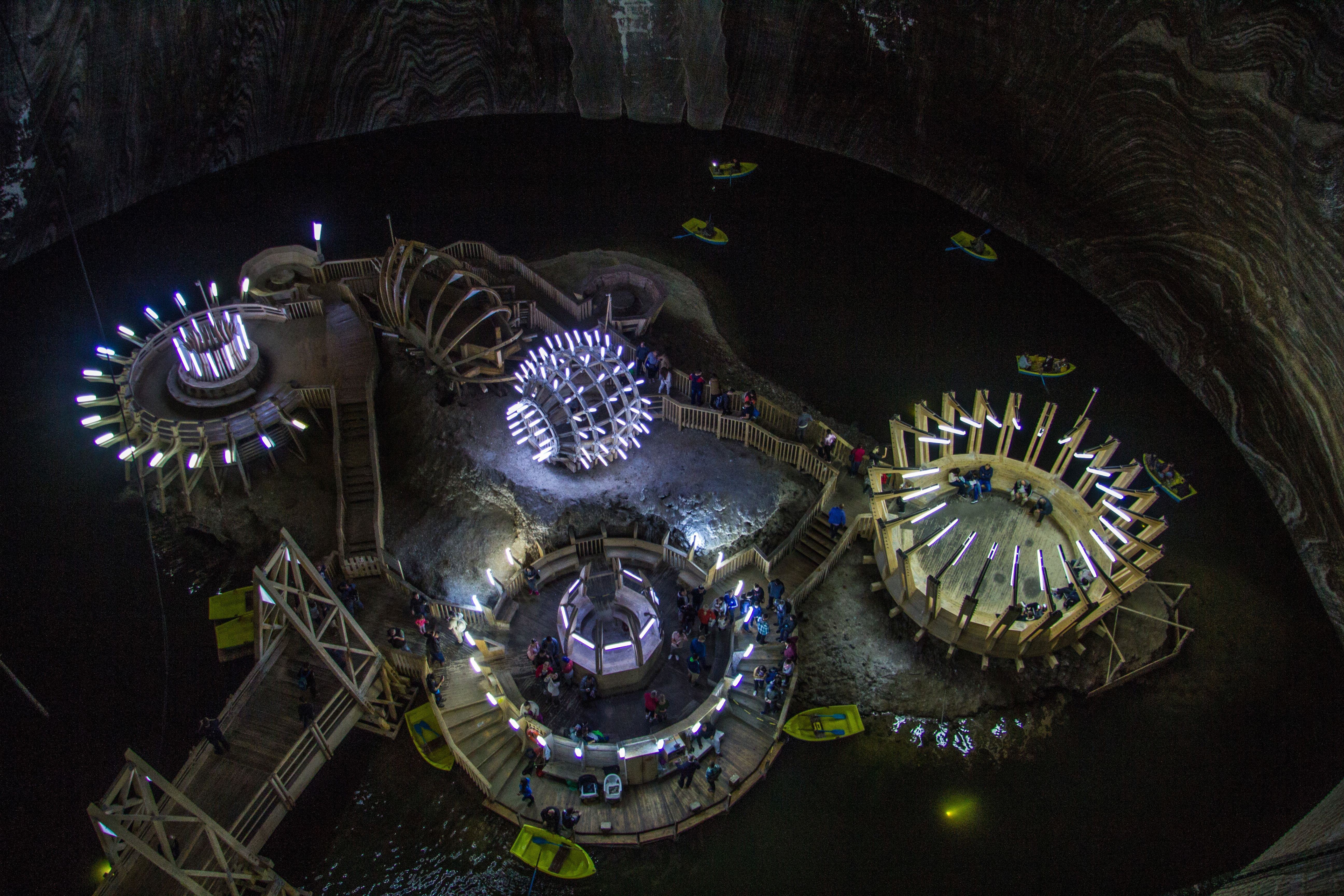
5. Visit the spectacular (and healthy!) Turda Salt Mine
If you're looking for a unique place in Transylvania, then the Turda Salt Mine, considered by many to be the best salt mine in Romania, should be on your list. The difference between salt mines and all other mines is that breathing salty air is good for your lungs.
Turda Salt Mine is a great spot for those with respiratory issues like asthma, as doctors recommend salt therapy, breathing in the air, for its benefits. Even the Romans used salt mines 2,000 years ago for the same reason!
Since 2008, innovative lighting has turned the mine into one of Romania’s top attractions. Visitors can explore vast grottos and galleries while detoxing their lungs.
Plus, enjoy fun activities like an underground Ferris wheel or a boat ride on an underground lake. Wait... what?
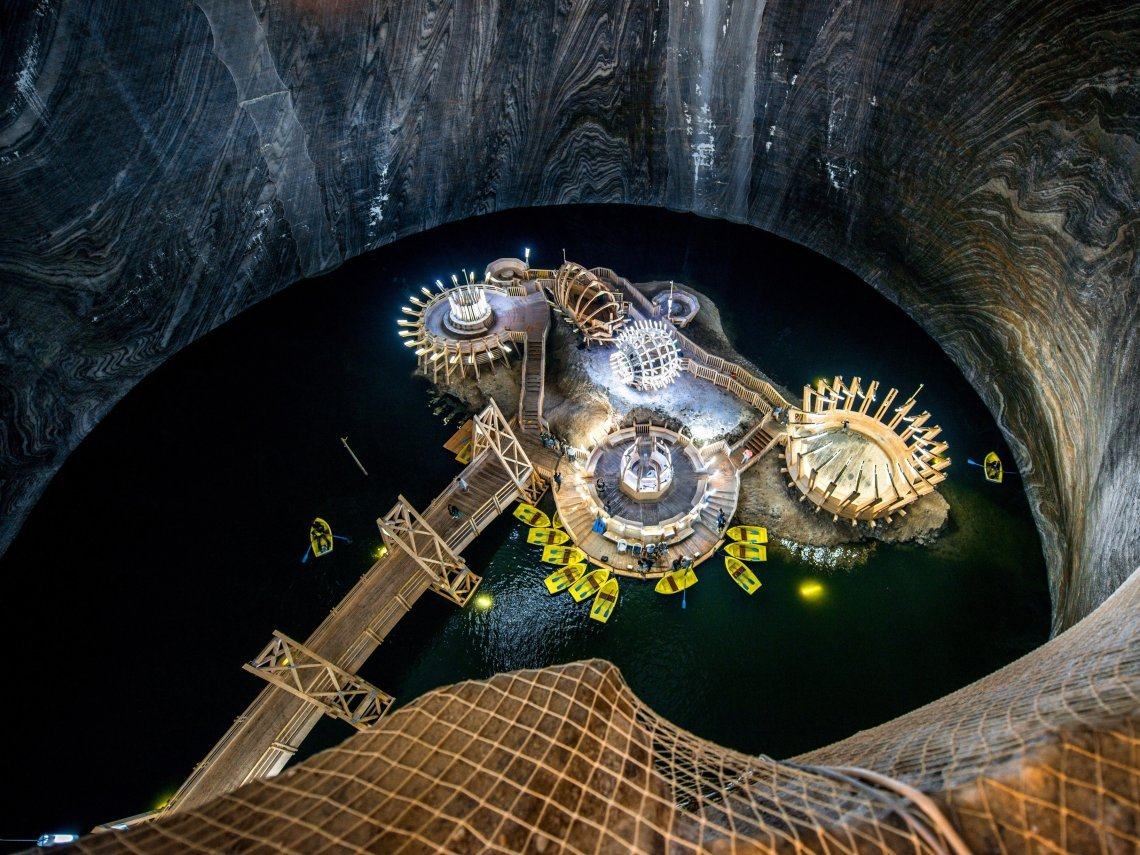
Turda Salt Mine is one of Transylvania's best attractions
Yup - going to a salt mine in Romania is like going to the park on a chilly day.
Turda Salt Mine is perfect for reading, socializing, playing games, or simply walking around. With no cell reception and only water allowed (to avoid air contamination), the aim is to spend at least two hours inside, and many Romanian salt mines are set up as small amusement parks to enhance the experience.
The mine does a fantastic job of this. Personally, I enjoy taking mindful walks through its galleries, admiring the stunning patterns on the walls. It's easy to visit on a day trip from Cluj-Napoca or Sibiu. Entrance ticket costs 10 Euro / $11 and be sure to bring a jacket or something to keep you warm.
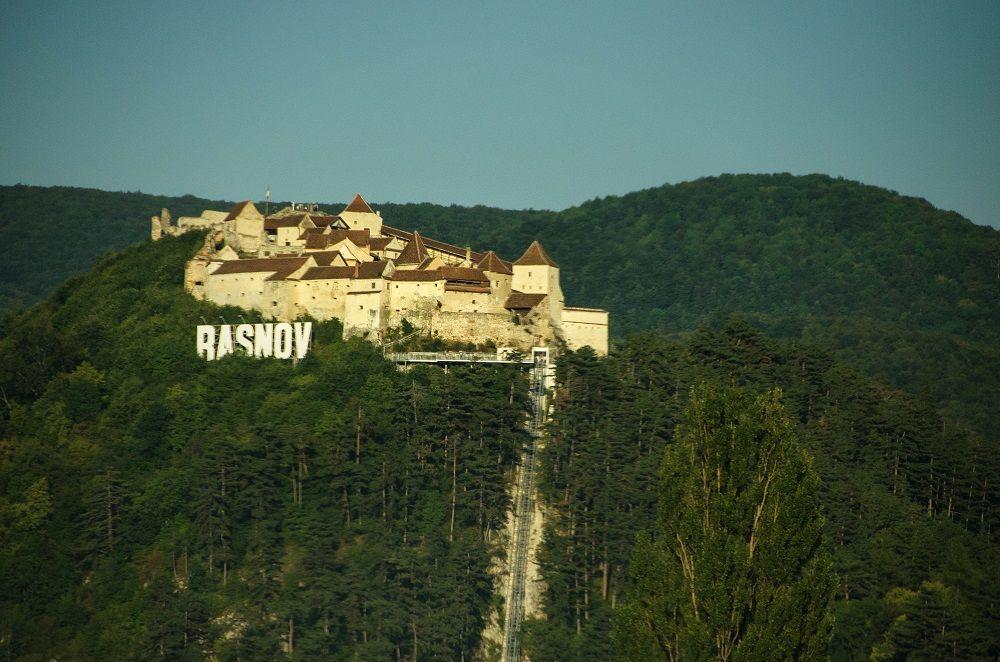
6. Take a day trip to Rasnov Fortress
Transylvania's Rasnov Fortress, built on a rocky hill, is a testament to the region’s strategic importance and rich history. The Teutonic Knights built the fortress in the 13th century as a vital defensive stronghold during conflicts between the Ottoman, Habsburg, and Hungarian empires.
Today, it’s one of Transylvania’s most iconic attractions, drawing visitors to admire its imposing walls, scenic surroundings, and historical significance.
Located near Brasov, Rasnov Fortress makes a perfect day trip, easily combined with a visit to nearby Bran Castle.
Pro tip:If you're visiting Romania with kids, in the close proximity of Rasnov Fortress you can find Dino Park, which is an open-air museum with full-size and realistic dinosaurs.
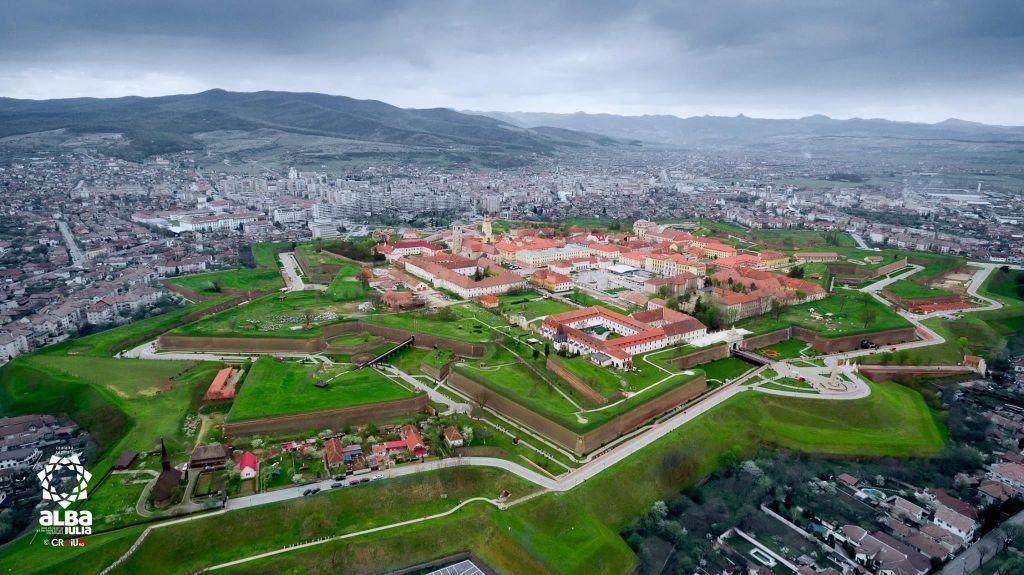
7. Visit Romania's spiritual capital: Alba Iulia Citadel
Alba Iulia Citadel in the small town of Alba Iulia, is considered the spiritual birthplace of modern Romania. Within its walls, the 1918 Great Union was proclaimed unifying the principality of Transylvania with the rest of Romania (Wallachia and Moldova) after WWI.
A few years after this pivotal event in Romanian history, King Ferdinand and Queen Marie had their coronation ceremony at Alba Iulia Cathedral within the Citadel Walls, marking the birth of Greater Romania. This event makes Alba Iulia Romania’s spiritual capital, with impressive National Day celebrations on December 1st.
The Alba Iulia Citadel, built in the early 1700s on a Roman castrum, is a beautifully restored historical site. It hosts events, fairs, and a daily changing of the guard ceremony.
It's a great day trip from Cluj-Napoca or Sibiu, both just 1.5 hours away by car.
The best driving road in the world!
8. Transfagarasan Highway - a thrilling ride with awesome views!
Named the best driving road in the world by Jeremy Clarkson, it offers stunning views with every twist and turn. Built for military purposes during communist times, it’s also known as Ceausescu's folly due to the vast resources spent on it.
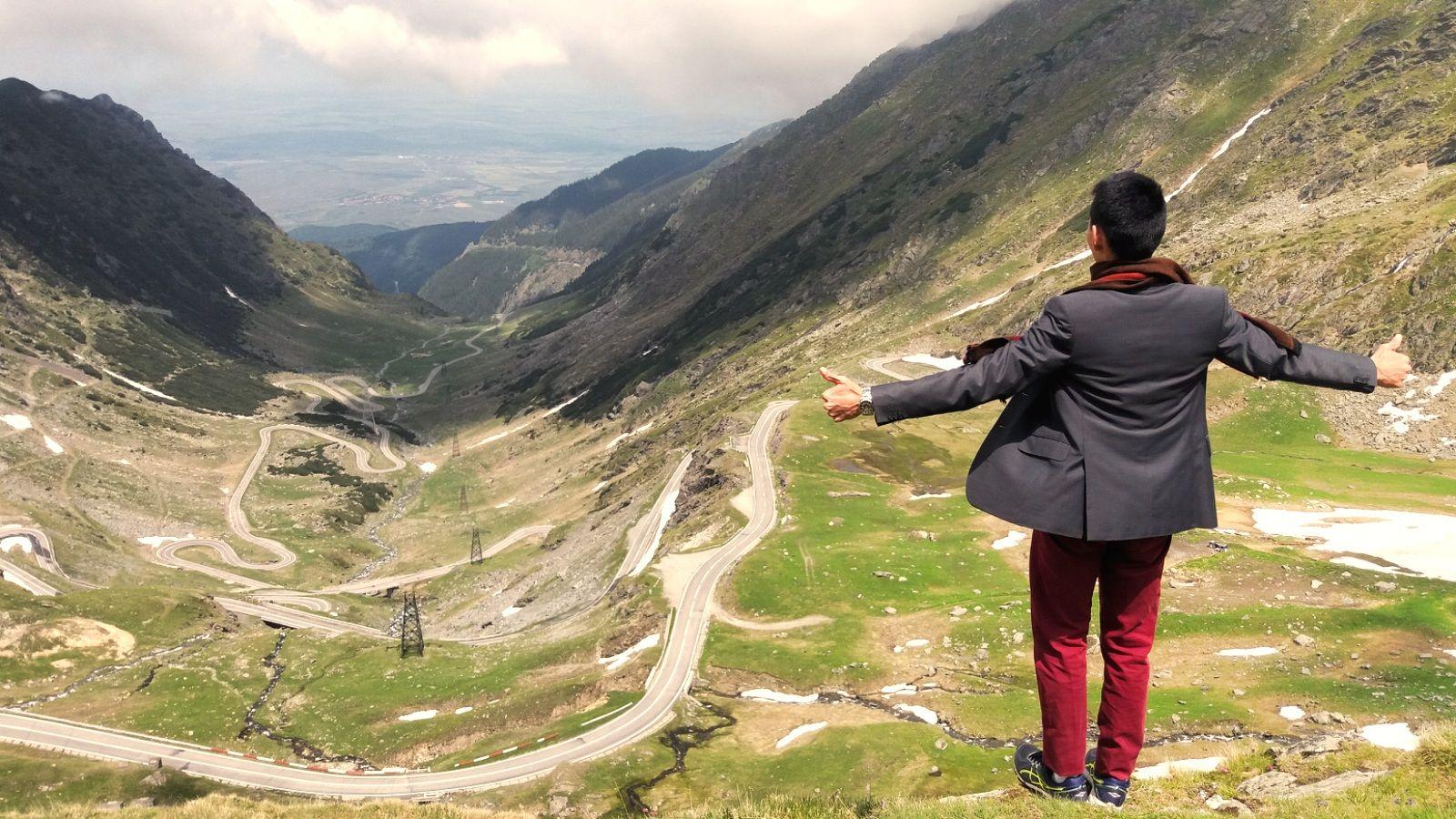
At 2,042m, it’s the main road through the Fagaras Mountains, crossing from Cartisoara to Curtea de Arges (DN 7C). These wild, beautiful mountains are a hiking paradise. At the summit, you’ll be rewarded with breathtaking views of Transylvania’s plains.
Local tip:Due to snow, the road is open for driving only1 July - 30 Octso that's the best time to visit if you want the driving experience or if you're planning to visit from Bucharest.
Outside of the main season, you can view Transfagarasan Road from above! Starting from Brasov or Sibiu, drive partway, then take a cable car across the closed section to Balea Lake, a stunning glacial lake. From there, enjoy a short walk for the best views or embark on longer hikes in the Fagaras Mountains. It's one of the top things to do in Transylvania.
Local tip:If you love stunning scenery and winding roads, Transalpina Road (King Carol Road) is a must. West of Sibiu, it’s Romania’s highest road at 2,145m, crossing the Parang Mountains from Sebes to Novaci (DN 67C). With more restrictions than Transfagarasan, it offers equally breathtaking views.
9. Transylvanian culture in cities and villages
Each tourist city in Transylvania has its unique personality, vibe, reputation, and great medieval architecture (just think about Sighisoara or the Black Church in Brasov). If you ask locals, they're all very different!
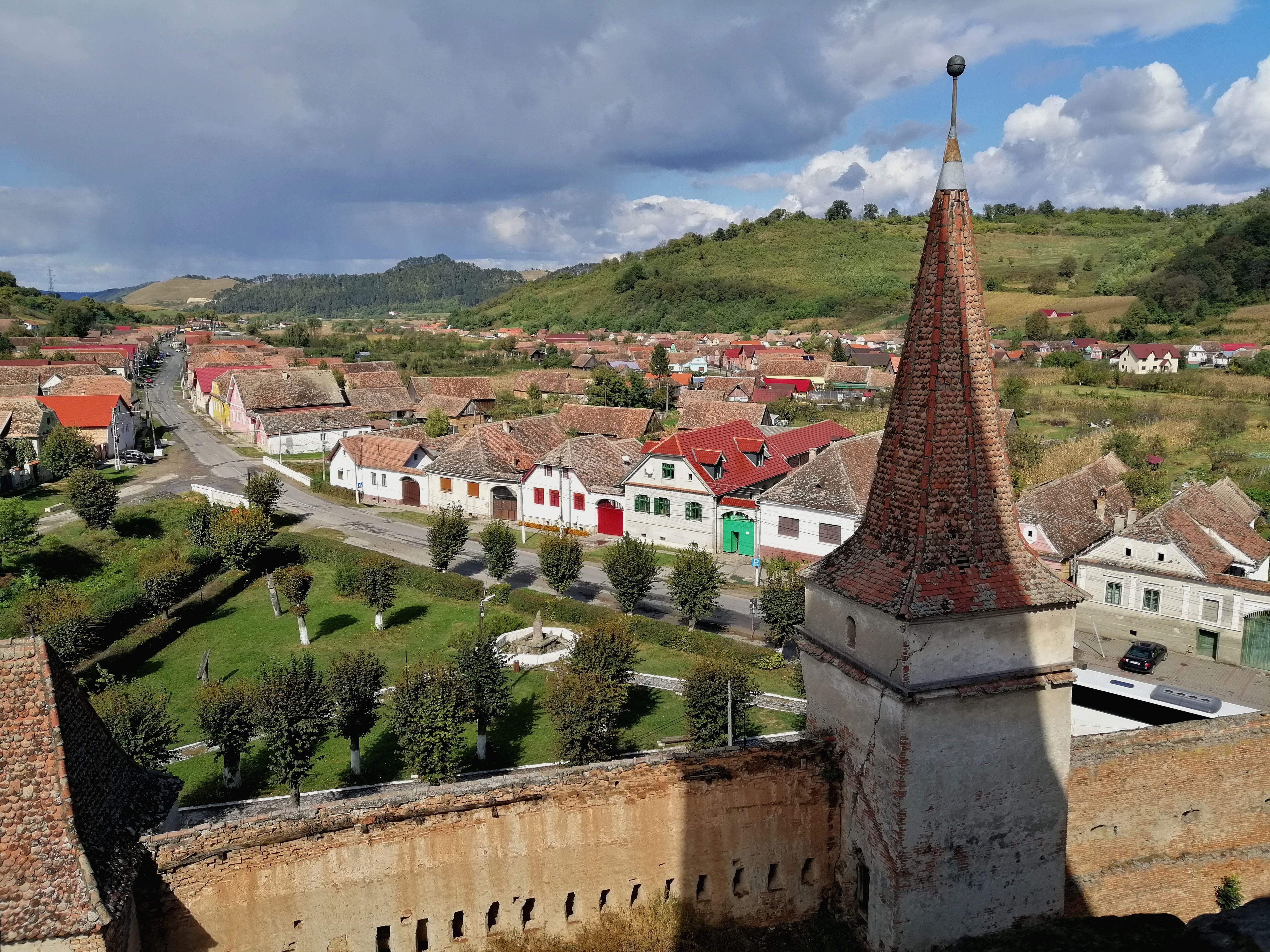
A typical village Saxon village Transylvania
But Transylvania’s true beauty lies in its famous countryside and rural areas, in traditional villages where the simple way of life of locals, their sense of community, and hospitality will capture your soul instantly. Add to the mix picturesque landscapes and quiet village life you've got yourself a perfect holiday in Romania to disconnect and wind down far from the business of city life.
But Transylvania’s true beauty lies in its countryside and traditional villages, where the simple way of life, strong community spirit, and hospitality will instantly capture your heart. With picturesque landscapes and peaceful village life, it’s the perfect escape to disconnect from city life.
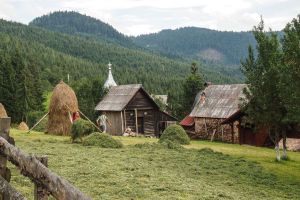
2 Day Hiking in Apuseni Natural Park: Culture & Local Life
Start from: Cluj-Napoca or Sibiu
There are many ways to explore: day trips, hiking, photo tours, horse riding, agro-tourism, and more. For the best experience, consider a guide familiar with the area and locals. Check our suggestions below or contact us for a private tour.
In addition to Saxon Transylvania, the region includes Maramures, Bucovina, and Motilor Land in the Apuseni Mountains, offering the most authentic Romanian cultural and countryside experience.
For example, in Maramures, centuries-old Romanian traditions remain alive. You’ll see wood-carved decorations and locals wearing traditional folk costumes, like the Romanian blouse (ie), to church on Sundays.
Besides the delicious food (all with home-grown ingredients!), there are some interesting things to do in Maramures such as visiting the Ethnographic Museum, the Merry Cemetery of Sapanta or the famous UNESCO Wooden Churches.
Going on a ride on the Mocanita Steam Train is a favorite too! To visit this region, another must-see sight of Transylvania, it's best to start from Cluj-Napoca and have min. 2-3 days.
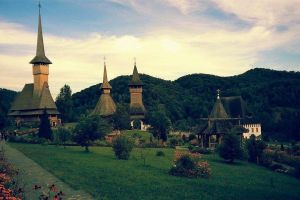
2 or 3 Days in Maramures: Wooden Churches, Traditions & Village Life
Start from: Cluj-Napoca
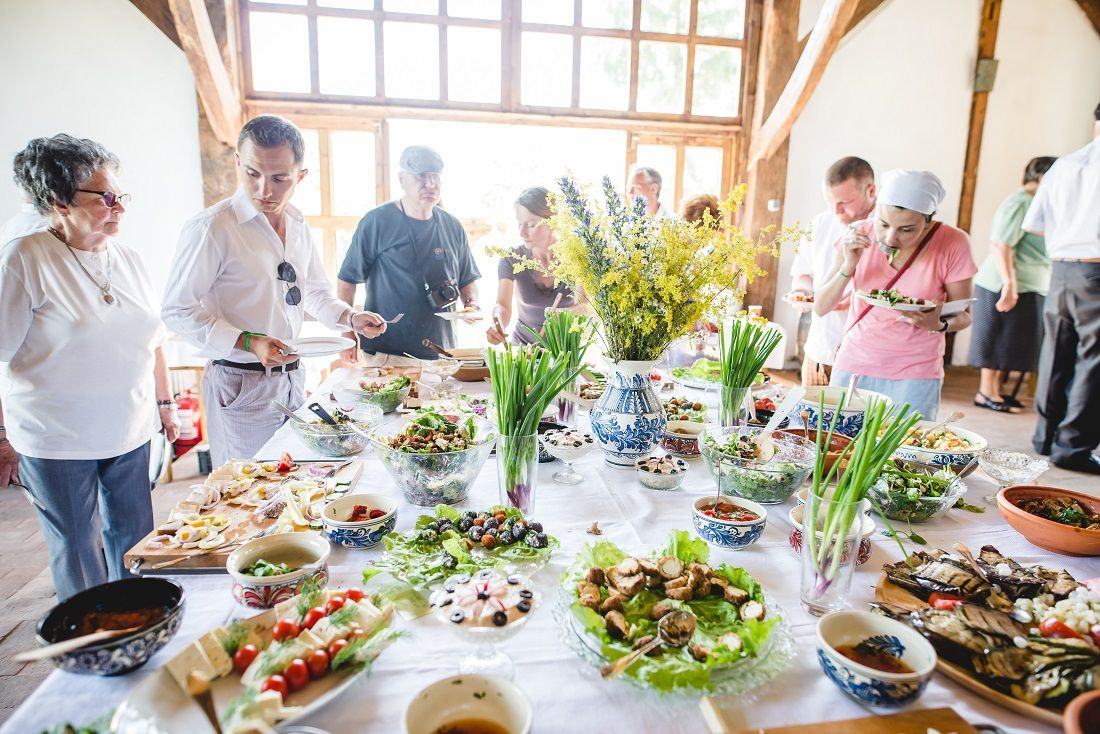
10. Transylvanian food and wine - a must-try!
The whole region is naturally blessed with fertile lands and sun-bathed hills. With its mix of cultures and rural traditions of farming and self-sustainability, Transylvania has a reputation for its delicious food and wines. Much of Romanian traditional food and products come from the region and they're famous and preferred even by locals.
Sibiu is renowned for its products like cheese, cured meats, and jams, earning the European Region of Gastronomy title in 2019. In the city and nearby villages (Marginimea Sibiului), you’ll find both traditional food producers and trendy restaurants where young chefs add a modern twist to traditional dishes.
For years, locals have had a clear preference for homemade, organic produce from small, local producers - which makes food in the region truly delicious!
Sibiu has several restaurants known for this (check our Sibiu attractions guide for more) and on day trips our guides will take you to family households and small guesthouses where locals will cook for you!
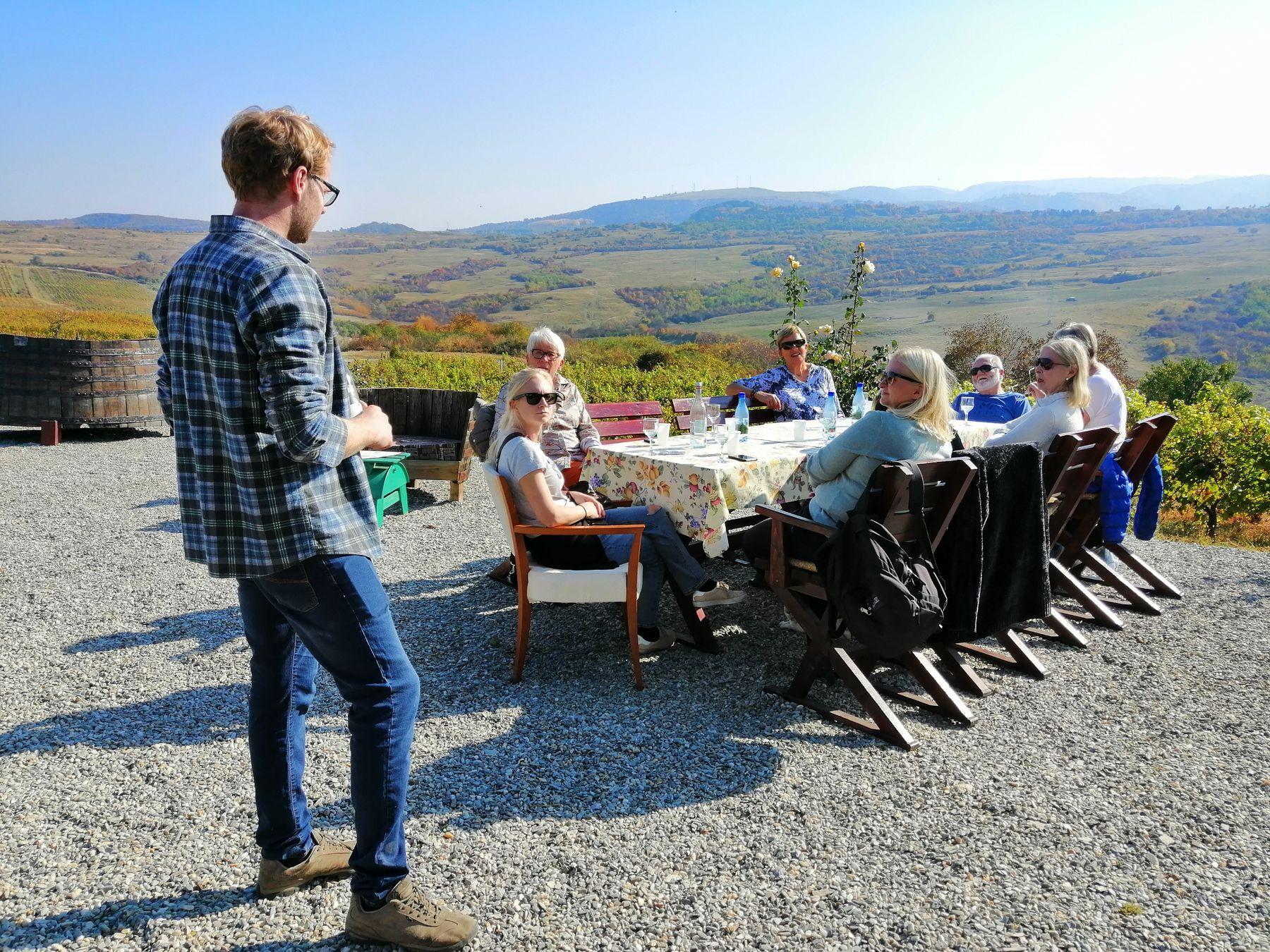
A wine tasting trip in Transylvania
Transylvania's wines have been famous for over 2,000 years, enjoyed by the Dacians, Romans, and migrants. Central Transylvania is home to many wineries, from large-scale operations to boutique producers. In the past decade, the quality and popularity of Romanian wines—and wine tourism—have grown significantly.
Local tip:Unfortunately most wineries don't offer 'walk-in' tastings for 2 people, but we can arrange that for you on a custom tour. You can also order a glass of Romanian wine in any restaurant or bar - we're sure it will surprise you!
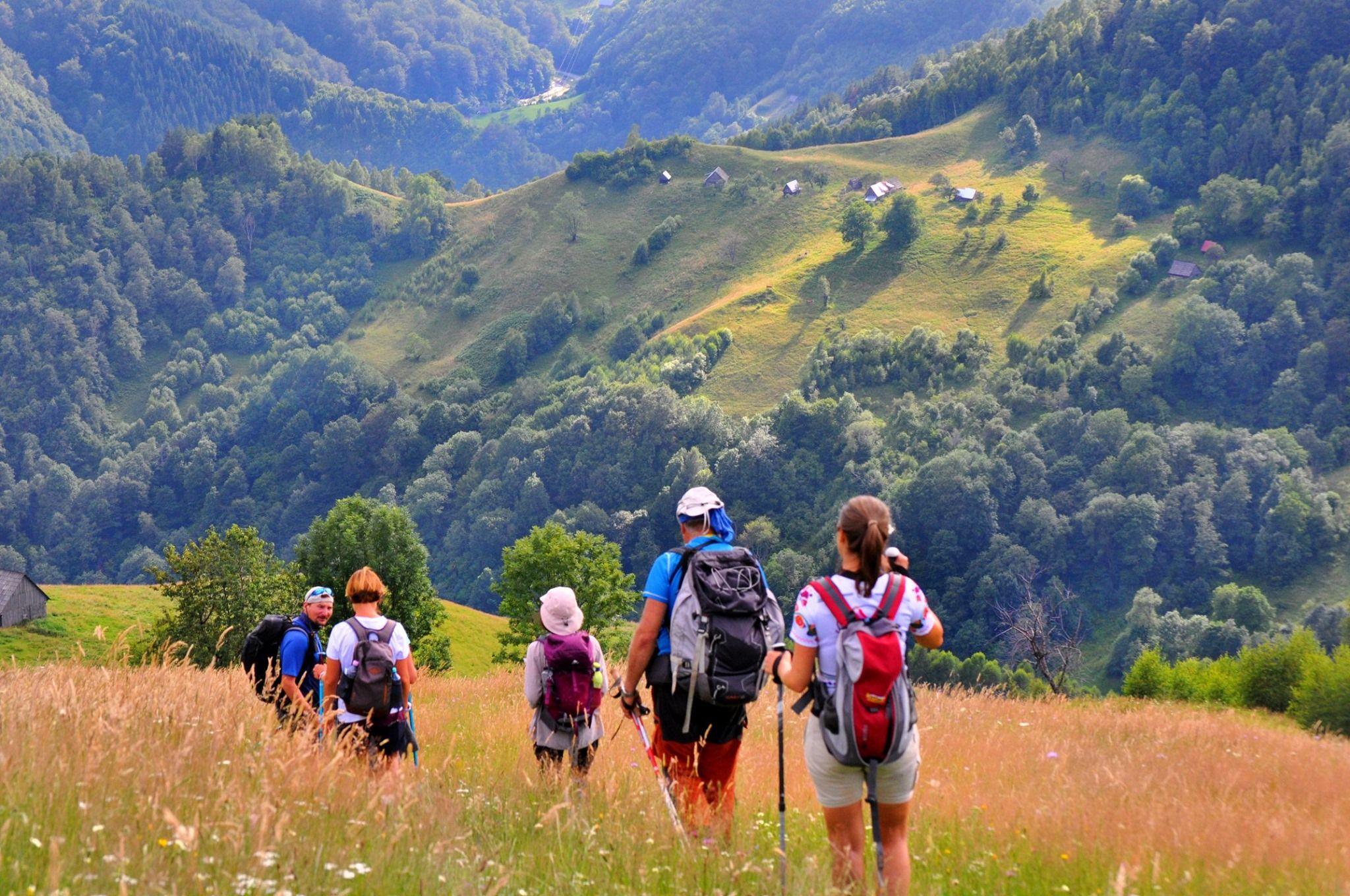
11. Go hiking in Transylvania
The Carpathian Mountains form Transylvania's natural border, offering vast, undiscovered outdoor potential. There are trails for everyone, regardless of fitness level or time available, making exploring Transylvania's landscapes a top recommendation.
Brasov, Sibiu, and Cluj-Napoca are ideal starting points for day hikes or multi-day tours in the Carpathians. The best hiking season is May to October, though it’s possible year-round with the right gear and experience.
Pro tip:In the winter months, you can trade hiking trails for ski slopes, or even the best spa resorts in Romania if you prefer relaxation. We have an article ready if you want to check the best ski resorts in Romania.
Famous natural attractions you should see:
- Zarnesti Gorges and the Seven Stairs Canyon, close to Brasov
- the impressive Turda Gorges, White Cliffs, Scarisoara Ice Cave or the steep hill Szekler's Stone close to Cluj-Napoca
- Balea glacial lake (NOT for dipping!) and Red Lake.
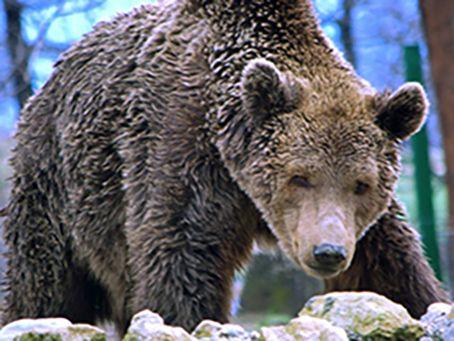
12. Wildlife tracking and bear watching
Transylvania's pristine wilderness offers unmatched wildlife viewing opportunities, with animals rare in other parts of Europe. Known as Europe's last wilderness reserve, Romania's Carpathian Mountains are home to brown bears, wolves, lynxes, and wild boars.
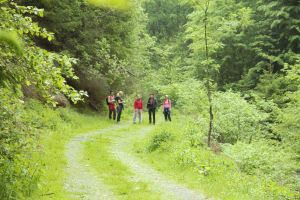
Hiking & Wildlife Tracking Trip in the Carpathians
Start from: Rucar, Leresti, or Nucsoara (Arges county)
Piatra Craiului National Park is perfect for hiking through wild forests, staying in animal observatories, or using wildlife cameras for recent sightings.
With one of Europe's largest brown bear populations, bear-watching tours near Brasov provide an immersive, conservation-focused experience. These safaris promote responsible wildlife viewing to help preserve Transylvania’s biodiversity.
Pro tip:While these tours usually run from spring to autumn, the summer months are when the animals are the most active and you have the most chances to see them roaming around.
13. Stay in family-owned boyar mansions or restored village houses
Transylvania’s multiculturalism, heritage buildings, and scenic countryside attracted many city dwellers seeking a slower, more meaningful life. Since 2008, former traditional houses, boyar estates, and manors have been restored into boutique, luxury guesthouses.
These charming accommodations offer premium services, organic local food, stunning views, and a blend of rural life with modern comforts, making them highly sought after year-round.
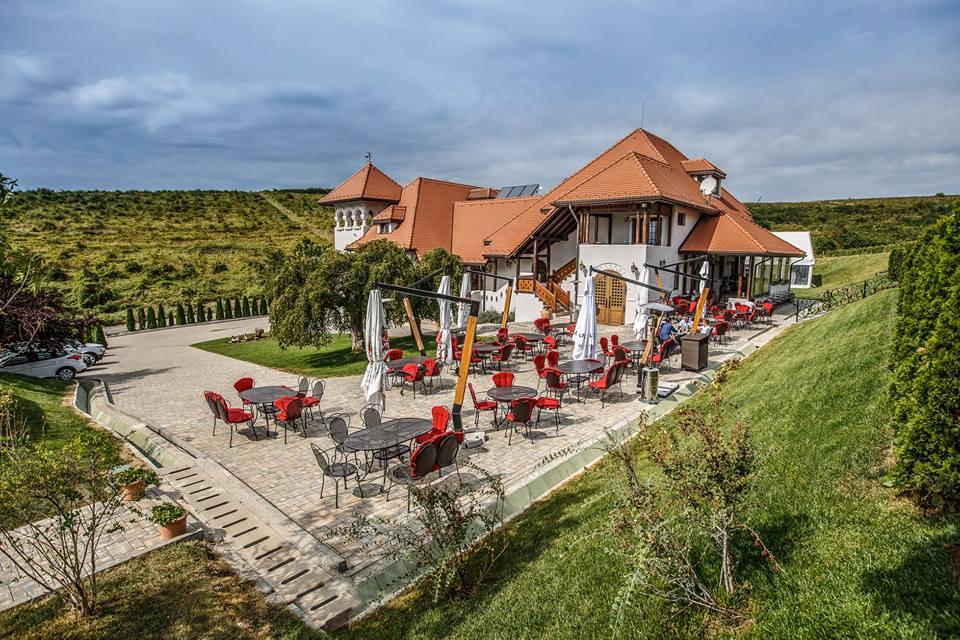
Check here for some inspiration and you can find most of them on Booking.com or Airbnb. Most guesthouses are in remote areas, accessible by car, and on the pricier side. However, a stay of one or two nights will create unforgettable memories from your Transylvanian holiday!
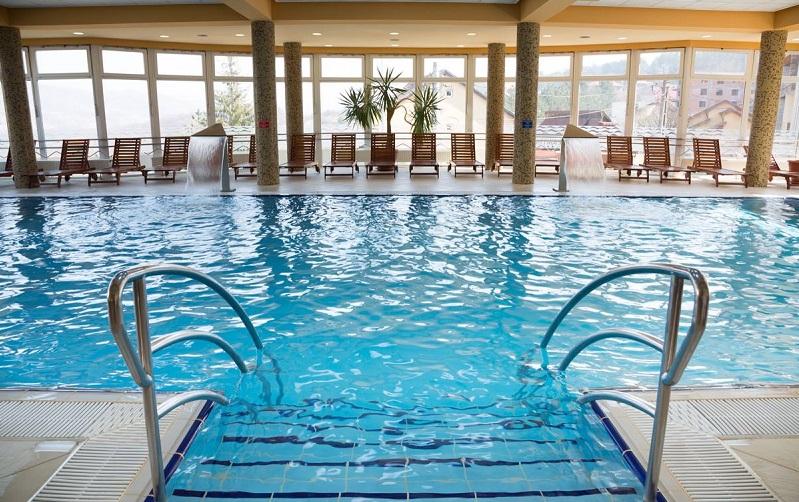
14. Relax in one of Transylvania's many thermal baths and spa resorts
Transylvania is home to several spa resorts and thermal springs known for their healing properties, providing a peaceful retreat from everyday life.
My favorite is Geoagiu-Băi Resort, located near Orăștie and Deva, offering pools with natural thermal water for conditions like rheumatism and skin issues. Nearby, you can visit the ancient ruins of "Germisara" Roman Thermal Baths, a site with roots in Dacian and Roman times, though it's not well-maintained and free to visit.
Other notable thermal resorts include Baile Felix (near Oradea), Baile Tusnad and Baile Balvanyos (near Tusnad), and Baile Cojocna (near Cluj-Napoca).
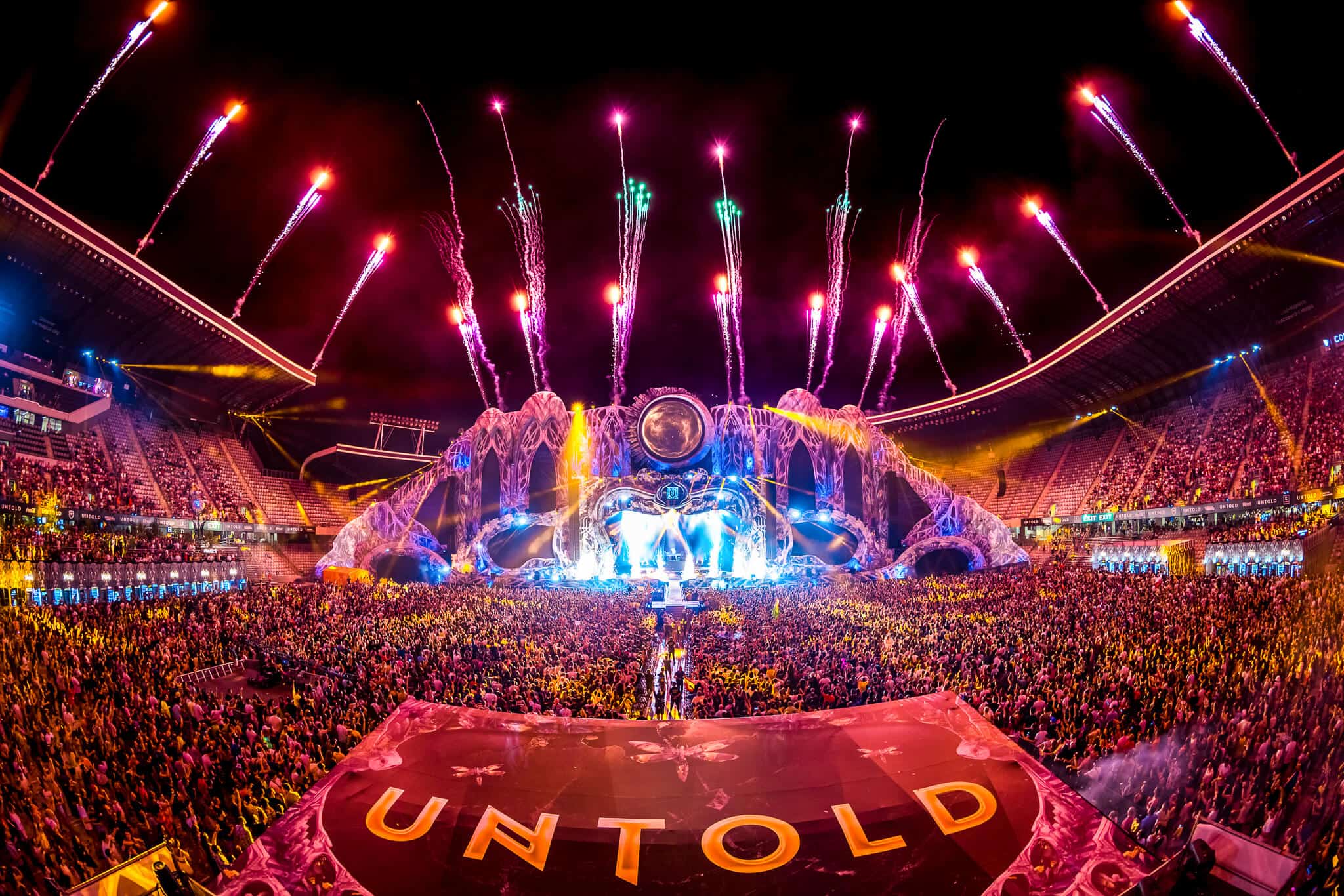
15. Attend cultural events and festivals
Transylvania is famous for its landscapes, history, and vibrant cultural scene, showcased through various events and festivals. One of the top attractions for music lovers is the Untold Festival, one of the world's largest electronic music festivals, held annually in Cluj-Napoca.
Other notable music events are the Electric Castle Festival (near Cluj-Napoca), ARTmania Festival (Sibiu), Rockstadt Extreme Fest (Rasnov), and Jazz in the Park (Cluj-Napoca).
In addition to music festivals, Transylvania hosts numerous cultural events celebrating its heritage, such as traditional folk festivals, medieval fairs, and theatrical performances. Notable events include the International Theatre Festival (Sibiu), Sighisoara Medieval Festival, and Transilvania International Film Festival (Cluj-Napoca).
For more music festivals and events in Romania, check out our article.
And if you're visiting Transylvania during the winter holidays, don't miss the Christmas markets in Sibiu and Brasov, where you'll find artisan products, traditional food, folk costumes, and concerts in the old town or main square.
***
Transylvania is often overlooked but regularly featured in renowned guides like Lonely Planet and Conde Nast. The best experiences here go beyond ticking off tourist attractions, like rushing from one famous castle to another, it's about immersing yourself in the region’s rich culture, nature, and history.
Slow travel allows you to truly connect with rural life and local traditions, making your holiday more meaningful.
I hope this article gave you a taste of what to do in Transylvania and help you plan your visit here - and if you have any questions contact us, we're here to help!
Your Romanian Friend,
Marius
